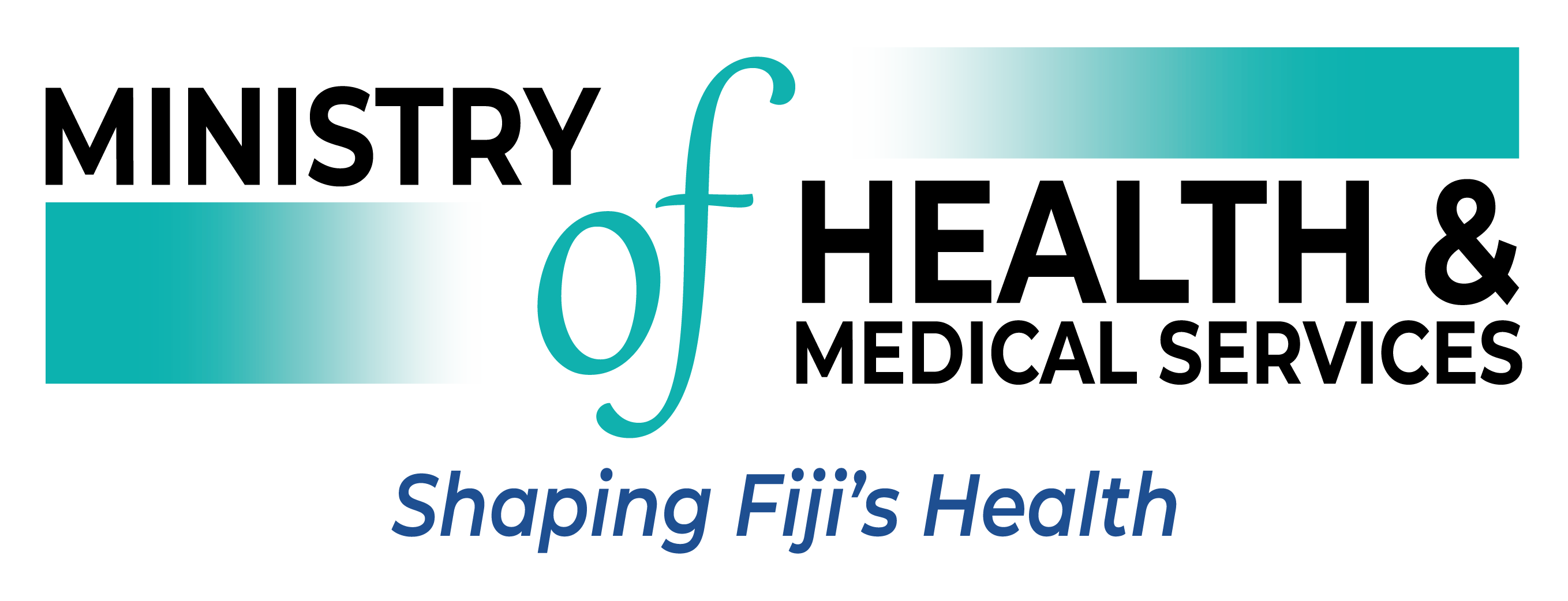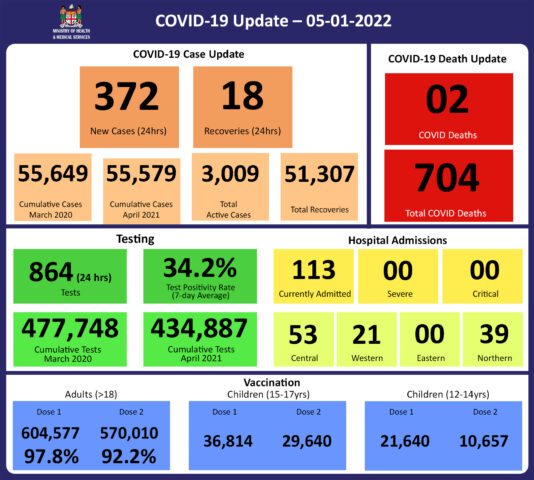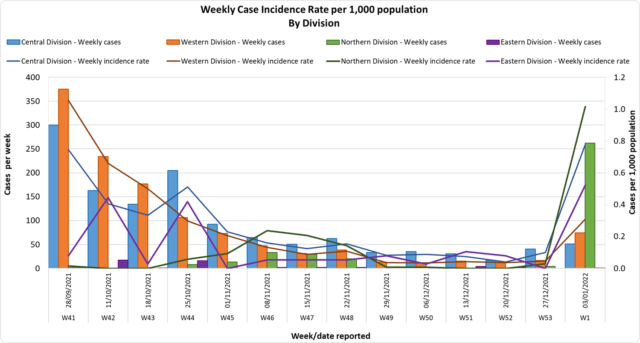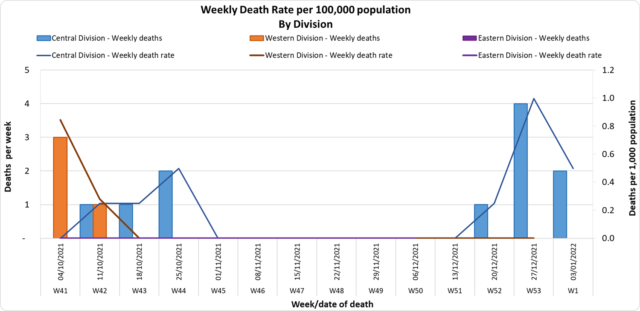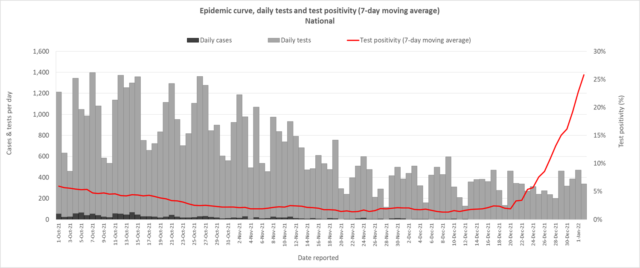COVID-19 Update 05-01-2022
COVID-19 Situation Update
Wednesday, 05th January
| Transmission Update:
In the past 7 days until 04/01/2022, 709 new cases were recorded in the Central division, 303 new cases in the Western division, 23 new cases in the Eastern Division, and 706 new cases in the Northern Division. The Central Division cases constitute 69% of the cumulative total cases nationally, with the Western division making up 27%, 3% in the Northern Division, and 1% in the Eastern Division. Since the last update, we have recorded 596 new cases of which 224 new cases were recorded on 04/01/2022 and 372 new cases in the last 24 hours ending at 8 am this morning. Of the 372 cases recorded in the last 24 hours, 254 cases were recorded in the Central Division; 103 cases were recorded in the Western Division, 6 cases were recorded in the Northern Division, and 9 cases were recorded in the Eastern Division. The national 7-day rolling average of cases as of 1st January is 278 daily cases. |
| Deaths:
This curve depicts the weekly death rate per 1,000 population by division since October 2021. Overall, the death rate graphs indicate an increase in the number of COVID-19 deaths in the Central Division, while the other Divisions have not recorded any COVID-19 deaths. There are two COVID-19 deaths to report. The first COVID- 19 death to report is of a 75-year-old male from Suva who died at home on 31/12/2021. He had significant pre-existing medical conditions that also contributed to his death. He received his first dose of the COVID-19 vaccine mid July and second dose mid September. He was fully vaccinated. The second COVID-19 death to report is of a 56-year-old female from Korovou who died at home on 01/01/2022 in respiratory distress. She had multiple pre-existing medical conditions that also contributed to her death. She had received only one dose of the COVID-19 vaccine, which means she was not fully vaccinated. There have been 704 deaths due to COVID-19 in Fiji, with 702 of these deaths during the outbreak that started in April last year. Please note that due to the time required by clinical teams to investigate, classify and report deaths, a 4-day interval is given to calculate the 7 days rolling average of deaths, based on the date of death, to help ensure the data collected is complete before the average is reported. Therefore, as of January 1st, 2022, the national 7 days rolling average for COVID-19 deaths per day is 0.6, with a case fatality rate of 1.32%. We have recorded 627 COVID-19 positive patients who died from serious medical conditions they had before they contracted COVID-19; these are not classified as COVID-19 deaths. |
| Hospitalisation:
Using the WHO clinical severity classification, a greater percentage, 78% (n=98) of the admissions of COVID-19 positive patients are categorized as asymptomatic and mild, 6% (n=7) are categorized as moderate and 6% (n=7) as severe with 1 case in the critical category. Anyone admitted to the hospital is tested before admission, therefore, a significant number of people are admitted to the hospital for non-covid health conditions, but incidentally, test positive due to the high amount of transmission in the community. The number of people being admitted because of COVID-19 remains low. |
| Testing:
864 tests have been reported for January 4th, 2022. The 7-day daily test average is 769 tests per day or 0.9 tests per 1,000 population. The national 7-day average daily test positivity is 34.2%, which is above the WHO recommendation of 5%. The high positivity rate is an indication of wider spread community transmission. |
Public Advisory:
While most of our more severe public health and social measures are based on changes in hospitalization data, the evidence is clear that we do need to keep up with measures to suppress transmission so that hospitalization numbers remain low. The evidence is that Omicron causes less severe disease than other variants. However, it infects a larger number of people in a shorter period of time, which means even a smaller percentage of people becoming severely ill may still mean a large number requiring hospitalization, which will put pressure on our health system.
We have always promoted individual COVID safe measures, even during the period of local cases prior to the current outbreak. However, it is evident that we need to have in place more stringent community-level measures to further enforce the message we are promoting. As such we will be announcing more stringent measures related to masking and social gatherings later this week.
Our testing capability is being tested at present and as such the public is reminded that we will need to prioritize our testing for people at higher risk of severe disease to prevent severe outcomes as well as to suppress transmission.
You should assume you are infected, and self-isolate, if you develop any cold/flu-like symptoms such as runny nose, sneezing, nasal congestion, sore throat, cough, body ache, fever. If you have any of these symptoms, please stay home to prevent infecting others, especially those who may be more at risk of severe disease. You should get tested if you can, but especially if you are at higher risk of severe disease. You are at higher risk of severe disease if you are over the age of 50, or have any significant chronic disease like heart disease, kidney disease, lung disease, diabetes, hypertension or you are obese or pregnant. If anyone in your home is at higher risk of developing severe disease, please try to isolate yourself away from them.
The isolation period is for 10 days. You may stop isolating once 10 days have passed since the start of symptoms (with at least 3 consecutive days of no symptoms) or since the positive test (for asymptomatic cases). The Ministry of Health is using a 7-day isolation period for our own staff, requiring a negative rapid antigen test on days 6 and 7 to help maintain essential health services.
For the general public, a 10 day quarantine period will apply to all individuals who are close contacts of a case. You do not need to be tested if you are a close contact unless you develop symptoms. A close contact is anyone who lives in the same house as a case, or has been in a confined space for at least 1 hour, or has come within 2 metres, or has had any physical contact, in the 2 days before the case’s symptoms started and up to ten days after.
Advice to the public on COVID safe measures
The festive season has brought about the significant movement of people as families reunite to celebrate Christmas and New Year. Gatherings have been observed where COVID-safe measures have not been followed, or people have attended while having symptoms. We ask that if you have relaxed in your observance of COVID safe measures, that you please resume now.
Always carry a well-fitted mask when you leave home, and wear it in any public indoor settings, and outdoor settings where there are crowds. Avoid crowds and poorly ventilated spaces. Maintain at least 2 metres of physical distancing from others when outside your home. Wash your hands frequently with soap and water or use an alcohol-based hand sanitiser. Stay home and do not attend any gatherings if you have any symptoms of COVID-19. Get vaccinated if you are eligible and have not yet been vaccinated. And get a booster dose if you are over the age of 18, but especially if you are at higher risk of severe disease.
Last Updated on 3 years by Publishing Team
